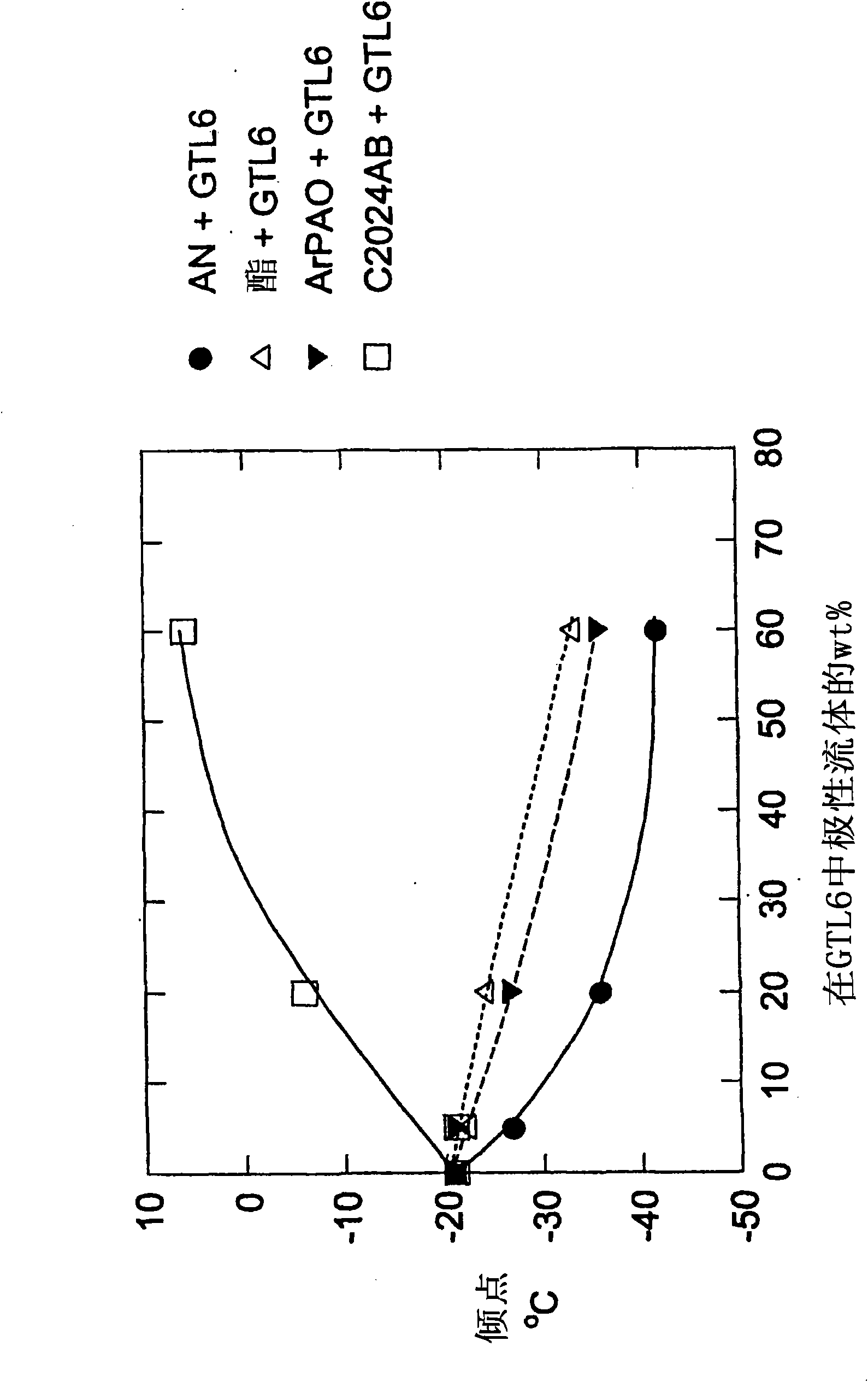Lubricating oil compositions having improved low temperature properties
A technology of lubricating oil and mixture, applied in the field of lubricating oil, can solve the problems of reducing the yield of process lubricating oil and so on
- Summary
- Abstract
- Description
- Claims
- Application Information
AI Technical Summary
Problems solved by technology
Method used
Image
Examples
Embodiment 1
[0203] Various base stocks were used to blend with the alkylated naphthalene fluids in the examples, and these base stocks are shown below, combined with varying amounts of the alkylated naphthalene fluid AN5, to show the effect on the pour point (in °C report)
[0204] Table 2
[0205] Wt% AN5 0 5 20 60 100
[0206] First class -21 -27 -29 -32 -39
[0207] Class III -25 -26 -28 -32 -39
[0208] GTL-6 -21 -27 -36 -42 -39
[0209] PAO-6 -58 -58 -50 47 -39
[0210] As shown, there is no synergistic improvement in the pour point when alkylated naphthalene (AN5) is blended with API Group I or Group III basestocks. Although the pour points of these blends were reduced, the reduction was never below that of the AN basestock. AN actually degrades pour point performance when combined with PAO. However, when AN was blended with GTL-6 (which had a pour point of -21°C), the improvement in pour point associated with the blend was non-linear (see figure 1 and Table 3). The data in...
Embodiment 2
[0214] Different amounts of AN5 (as described above) were mixed with GTL-14 (with a nominal kinematic viscosity of 14mm at 100°C 2 / s) combination. The results are shown in Table 4 below:
[0215] Table 4
[0216] wt% of AN5
[0217] As can be seen, the pour point of the GTL is in turn improved synergistically by the addition of alkylated naphthalene fluid.
Embodiment 3
[0219] Various amounts of AN12 (as described above) were combined with GTL-6. The results are shown in Table 5.
[0220] table 5
[0221] wt% of AN12
[0222] It can also be seen that the addition of alkylated naphthalene, in this case AN of high measured viscosity, to GTL-6 causes the blend to exhibit a non-linear decrease in pour point. Additionally, the oxidative stability of the blends is synergistically improved. The RBOT increased from 68 minutes to 111 minutes when 20 wt% of AN12 was added.
PUM
| Property | Measurement | Unit |
|---|---|---|
| pour point | aaaaa | aaaaa |
| pour point | aaaaa | aaaaa |
| pour point | aaaaa | aaaaa |
Abstract
Description
Claims
Application Information
 Login to View More
Login to View More - Generate Ideas
- Intellectual Property
- Life Sciences
- Materials
- Tech Scout
- Unparalleled Data Quality
- Higher Quality Content
- 60% Fewer Hallucinations
Browse by: Latest US Patents, China's latest patents, Technical Efficacy Thesaurus, Application Domain, Technology Topic, Popular Technical Reports.
© 2025 PatSnap. All rights reserved.Legal|Privacy policy|Modern Slavery Act Transparency Statement|Sitemap|About US| Contact US: help@patsnap.com



